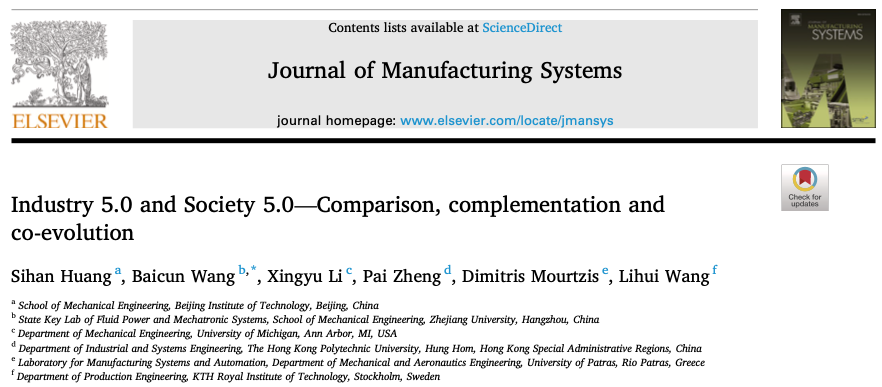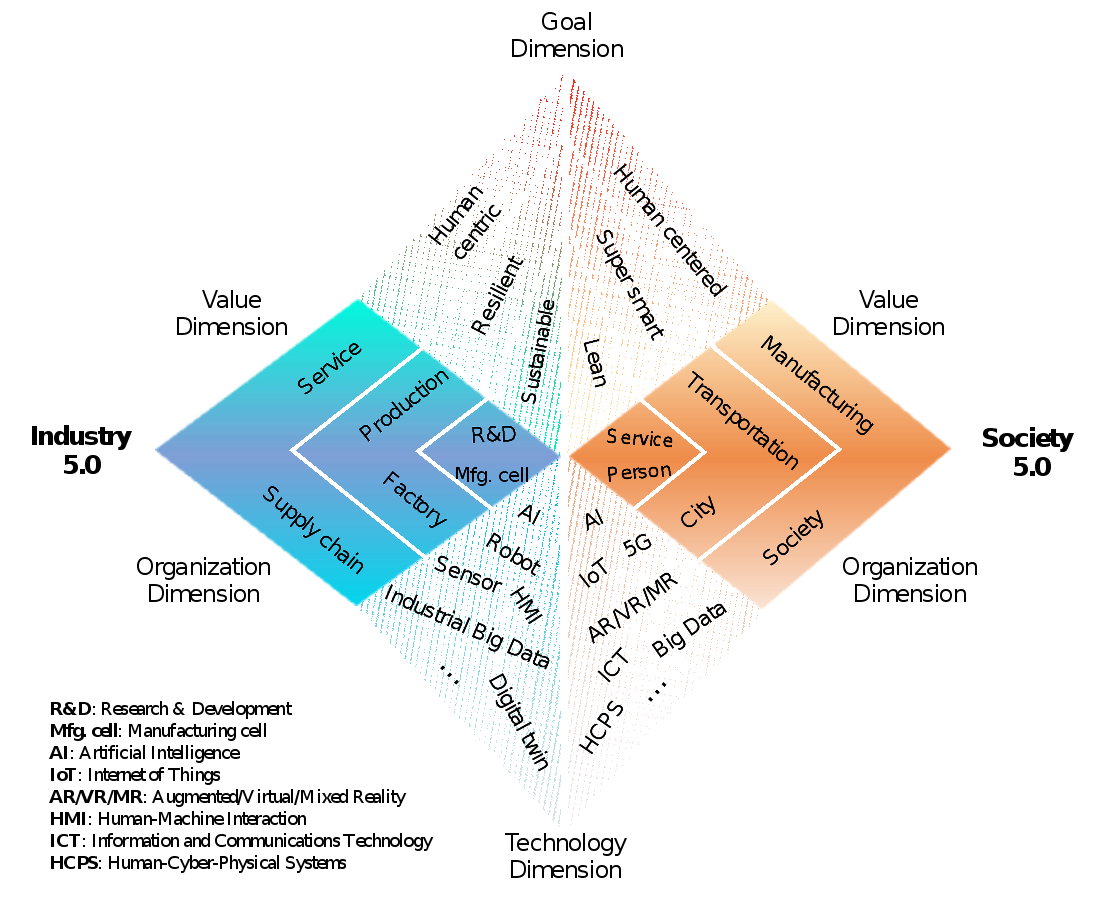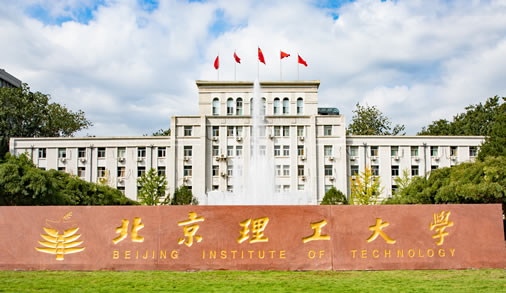

Updated: 2023-08-16

The paper "Industry 5.0 and Society 5.0—Comparison, complementation and co-evolution" by BIT's special research fellow Huang Sihan was included in Clarivate Analytics' ESI highly cited papers, with his research on Industry 5.0. The paper was published in the Journal of Manufacturing Systems, with an impact factor of 12.1. BIT is the first affiliated institution for this research, and Huang is the first author of the paper.
The paper discusses and presents the comparison, complementation, and co-evolution between Industry 5.0 and Society 5.0, to address the corresponding foundational arguments, which could be the basic inspiration for future investigation and discussion, accelerating the development of Industry 5.0 and Society 5.0. Industry 5.0 is a concept on the future of industry towards a human-centric, sustainable, and resilient manufacturing system, which provides a flourishing development vision of industry. The Industry 5.0 paradigm promotes systems' agility and resiliency, with the utilization of flexible and adaptable technologies.
Society 5.0 is a vision for a future super-intelligent society, where everyone can enjoy the benefits of technological development. It aims to build a human centered, super smart, and lean society. In order to have a deeper understanding of Industry 5.0 and Society 5.0, a systematic comparison is performed from four dimensions: goal, value, organization, and technology. Although there are differences in the scope of focus and key technologies between Industry 5.0 and Society 5.0, they share a consensus on the principle of "human-centeredness": (1) In the industrial field, people are the "masters" of production activities; (2) In social activities, the core is the improvement of people's well-being and value creation.
Industry 5.0 and Society 5.0 also face a series of common challenges and opportunities. They require further breakthroughs in core technologies such as Human-Cyber-Physical Systems (HCPS), Human Digital Twin (HDT), and Human-Robot Collaboration (HRC), as well as the exploration of creative application scenarios and value growth points.

Goal dimensions of Industry 5.0 and Society 5.0

Comparison and correlation of Industry 5.0 and Society 5.0

Shared challenges and opportunities
Paper link: https://doi.org/10.1016/j.jmsy.2022.07.010
About the Author
Huang Sihan is a special research fellow at BIT's School of Mechanical Engineering and Vehicles. He is also a Ph.D. supervisor and was selected for the 2020 Postdoctoral Innovation Talent Support Program. He serves as a special expert, an associate editor for the Chinese Academy of Engineering journal Frontiers of Engineering Management, as well as a young editorial board member for the Journal of Advanced Manufacturing Science and Technology (JAMST). Huang was a visiting scholar at the University of Michigan in the United States.
In recent years, he conducted a series of research projects in the areas of human-oriented intelligent manufacturing, digital twin, and reconfigurable manufacturing. He has published more than 30 academic papers in journals, such as the Journal of Manufacturing Systems, Journal of Intelligent Manufacturing, and International Journal of Production Research. Huang has also participated in the publication of an English book and a Chinese one, and holds 13 authorized national invention patents and three registered software copyrights. Furthermore, he has participated in the formulation of one IEEE international standard.
Huang has also undertaken projects such as the National Key Research and Development Program, Postdoctoral Innovation Talent Support Program, National Natural Science Foundation, Postdoctoral Science Foundation, and the Ministry of Education's Industry-University-Research Cooperation Program. He independently developed intelligent production line digital twin software tools, and applied them in the aerospace and electronics fields. In recognition, he has received one first-class scientific and technological progress award (12/15) at the provincial and ministerial level for his outstanding contributions.
Huang is a standing director of the journal Computer Integrated Manufacturing Systems, and holds positions in several professional committees and organizations related to digital twin technology in China.














